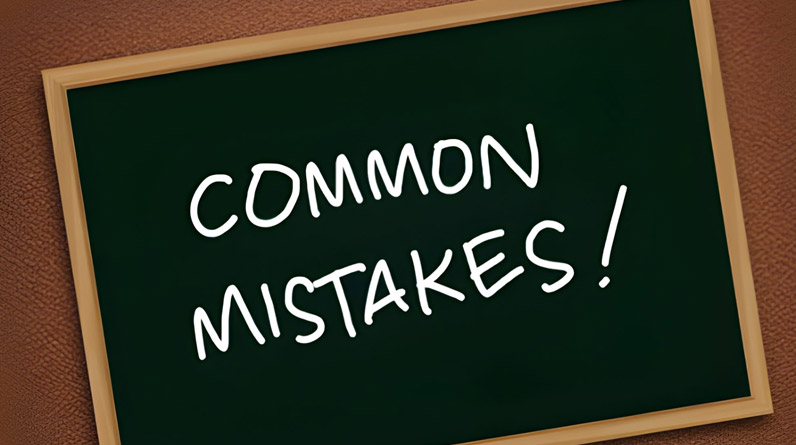Running a small business or managing a freelance career means wearing countless hats. You’re the marketer, accountant, project manager, customer service representative, and IT department all rolled into one. The challenge? You don’t have a Fortune 500 budget to support these roles.
Here’s the good news: you don’t need one. In 2025, the free tools landscape has evolved dramatically. What was once considered “barely usable” is now enterprise-grade functionality available at zero cost. The real challenge isn’t finding free tools—it’s knowing which ones actually work together and which ones will waste your precious time.
This guide takes a different approach. Rather than simply listing tools by category, we’ll explore the hidden cost of poor tool selection, introduce you to the concept of a “tool ecosystem,” and show you exactly how to build a scalable tech stack that grows with your business.
The Hidden Cost of “Free”: Why Your Tool Choices Matter More Than You Think
Most small business owners focus on the price tag: free versus paid. But there’s a more important metric nobody talks about: time debt.
When you choose incompatible tools, you create manual workflows. You’ll spend time copying data from one app to another, recreating information across platforms, and managing duplicated efforts. A freelancer might spend 30 minutes daily switching between tools and re-entering data. That’s 2.5 hours per week—or roughly 130 hours per year—wasted on tool logistics rather than billable work.
The real cost of your tech stack isn’t the subscription fees. It’s the time you lose juggling disconnected tools.
This is why the best approach to choosing free tools for small businesses is building an integrated ecosystem where tools talk to each other, share data automatically, and eliminate manual handoffs.
The Three Pillars of an Effective Small Business Tech Stack
1. Core Productivity Foundation
Every small business needs a reliable spine. This typically includes:
- Cloud storage and documents: Google Workspace (free tier includes Docs, Sheets, Slides, and 15GB Drive storage)
- Project management: Trello for visual task management or Asana for team coordination
- Communication: Slack for team messaging or Zoom for video calls
These aren’t just tools—they’re the foundation that everything else builds upon. Google Workspace alone can handle 70% of most small business operational needs.
2. Revenue-Generating Layer
This is where freelancers and service-based businesses focus. It includes:
- Customer Relationship Management (CRM)
- Email marketing
- Invoicing and payment collection
- Time tracking (for accurate billing)
These tools directly impact your bottom line. A tool that helps you send invoices 2 days faster means 2 days faster payment. Over a year, that difference compounds significantly.
3. The Multiplier: Automation Layer
This is the secret weapon most small business owners overlook. Automation tools like Zapier connect all your other tools, eliminating manual data entry and creating workflows that work while you sleep.
For example: A new form submission automatically creates a contact in your CRM, sends a welcome email, and adds the lead to your follow-up calendar. All happening instantly. Zero manual effort.
The Free Tools Landscape in 2025: What’s Actually Worth Your Time
| Category | Best Free Option | Why It Stands Out | When to Upgrade |
|---|---|---|---|
| Project Management | Trello | Visual, intuitive, unlimited users on free plan | When you need advanced reporting and automation |
| CRM | HubSpot or EngageBay | Manage 250+ contacts with email marketing included | When contact limits become a constraint |
| Email Marketing | MailerLite | Generous free tier (3,000 emails/month), beautiful interface | When you exceed subscriber limits |
| Accounting & Invoicing | Wave | Unlimited invoices, expense tracking, payment processing | When you need payroll or advanced tax features |
| Design | Canva | 1M+ templates, professional results for non-designers | When you need custom designs or brand control |
| Time Tracking | Toggl Track | 5 users free, unlimited projects, Pomodoro timer | When you need billable rate customization |
| Scheduling | Calendly | Unlimited meetings on free plan, automatic reminders | When you need custom branding or routing |
| Video Conferencing | Zoom | Unlimited 1:1 calls, 40-min group limit | When group calls exceed 40 minutes regularly |
| Automation | Zapier | Unlimited 2-step automations, connects 7,000+ apps | When you need multi-step complex workflows |
Real-World Scenario: The Freelance Designer’s Perfect Stack
Let’s walk through a practical example of how these tools integrate for a freelance graphic designer:
- Client inquiry arrives via email → Automatically creates a contact in HubSpot CRM (free tier)
- Calendar reminder triggers → Calendly automatically books the consultation
- Meeting completed → Better Proposals generates a customized proposal (paid but $19/month)
- Client approves project → Trello automatically creates a task in the project board
- Work time logged → Toggl Track captures billable hours
- Invoice generated → Wave creates and sends the invoice with payment link
- Payment received → Zapier automatically updates the CRM deal status
This entire workflow requires zero manual data entry. The designer focuses entirely on creative work, not administrative tasks.
The Scaling Journey: How Your Tech Stack Evolves
Stage 1: Solo Solopreneur (Months 1-6)
Focus: Simplicity and cashflow
Essential tools:
- Google Drive (storage)
- Google Calendar (scheduling)
- Wave (invoicing)
- MailChimp or MailerLite (email)
- Canva (design needs)
Total cost: Free
Stage 2: Growing Freelancer (Months 6-18)
Focus: Efficiency and client management
Add to your stack:
- Trello (project management)
- HubSpot CRM (client tracking)
- Calendly (scheduling automation)
- Toggl Track (time tracking)
Total cost: Still free (or minimal paid tools)
Stage 3: Established Business (18+ months)
Focus: Delegation and scalability
Upgrade considerations:
- Asana Pro ($13.49/month) for team management
- Better Proposals ($19/month) for professional proposals
- Zapier Pro ($20/month) for unlimited automations
Total cost: $50-100/month for a powerful, integrated system
Avoiding Tool Fatigue: The Decision Framework
Here’s a truth that nobody talks about: more tools aren’t better. Tool fatigue is real, and switching between eight different apps depletes your mental energy and actual productivity.
Before adding a new tool to your stack, ask yourself three questions:
- Does it solve a specific, recurring problem? (Not “nice to have,” but essential)
- Can it integrate with my existing tools? (Check Zapier or native integrations)
- Am I replacing a tool or adding to complexity? (Consolidation is almost always better)
If you answer “no” to any of these, skip it. Wait until the need becomes undeniable.
The Integration Ecosystem: Where Real Magic Happens
The most underutilized free tool in 2025 is Zapier. Its free plan allows unlimited 2-step automations across 7,000+ apps.
What does this mean? You can create workflows like:
- New CRM contact → Automatically added to email list
- Form submission → Create task in Trello → Send confirmation email
- Completed project in Asana → Generate invoice in Wave
- Email attachment → Auto-upload to Google Drive with organized folders
These automations save approximately 10+ hours per month for the average small business. That’s almost $2,000 in reclaimed time annually.
Free Tools Comparison: By Industry
For Service-Based Freelancers (Designers, Writers, Consultants)
Essential stack: Wave + HubSpot + Calendly + Google Workspace + Canva + Zapier
Why: Emphasizes client management, scheduling flexibility, and invoicing speed
For E-commerce Entrepreneurs
Essential stack: Shopify (free trial + $1 plan) + Mailchimp + Canva + Google Analytics + Stripe
Why: Prioritizes sales channels, email campaigns, and payment processing
For Service Teams (Agencies, Coaching)
Essential stack: Asana + HubSpot + Slack + Google Workspace + Zoom + Zapier
Why: Focuses on team coordination, internal communication, and client collaboration
Common Mistakes When Building Your Free Tools Stack

Mistake #1: Choosing tools based solely on features
A tool with 50 features you don’t use is worse than a simple tool with 5 features you do use. Simplicity wins.
Mistake #2: Ignoring integration capabilities
Before adopting a tool, verify it connects to your existing stack. Otherwise, you’re creating data silos.
Mistake #3: Delaying upgrades when free plans become limiting
When your business outgrows a free tool, it’s time to upgrade. Trying to squeeze too much from free plans creates operational friction.
Mistake #4: Over-optimizing too early
Spend 6 months with Google Workspace and Wave before adding complexity. Start simple, add tools as problems become real.
The Bottom Line: Your Free Tools Strategy
The best free tools for small businesses and freelancers aren’t about finding the flashiest feature set. They’re about building a cohesive ecosystem that reduces friction, eliminates manual work, and lets you focus on what actually generates revenue.
Start with the essentials: Google Workspace, a project management tool, a CRM, and invoicing software. Then, as your business grows, add automation and specialized tools strategically.
In 2025, the difference between a thriving small business and a struggling one isn’t the tools they have. It’s how well those tools work together to amplify their efforts.
Your tech stack should be invisible—quietly working in the background while you focus on clients, creativity, and growth. When you achieve that, you’ve won.


